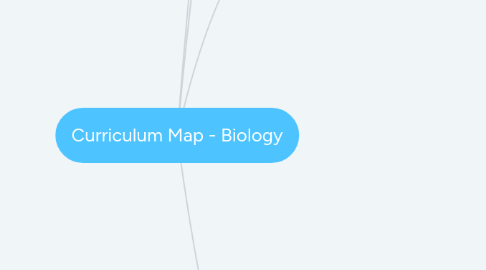
1. Grade 9
1.1. Big Ideas
1.1.1. Ecosystems are dynamic and have the ability to respond to change, within limits, while maintaining their ecological balance.
1.1.2. Ecosystems are dynamic and have the ability to respond to change, within limits, while maintaining their ecological balance.
2. Grade 10
2.1. Big Ideas
2.1.1. Plants and animals, including humans, are made of specialized cells, tissues, and organs that are organized into systems
2.1.2. Developments in medicine and medical technology can have social and ethical implications.
3. Grade 11
3.1. Big Ideas
3.1.1. Diversity of Living Things
3.1.1.1. All living things can be classified according to their anatomical and physiological characteristics.
3.1.1.2. Human activities affect the diversity of living things in ecosystems.
3.1.2. Evolution
3.1.2.1. Evolution is the process of biological change over time based on the relationships between species and their environments.
3.1.2.2. The theory of evolution is a scientific explanation based on a large accumulation of evidence.
3.1.2.3. Technology that enables humans to manipulate the development of species has economic and environmental implications.
3.1.3. Genetic Processes
3.1.3.1. Genetic and genomic research can have social and environmental implications.
3.1.3.2. Variability and diversity of living organisms result from the distribution of genetic materials during the process of meiosis.
3.1.4. Animals: Structure and Function
3.1.4.1. Groups of organs with specific structures and functions work together as systems, which interact with other systems in the body.
3.1.4.2. The development and uses of technology to maintain human health are based, in part, on the changing needs of society.
3.1.5. Plants: Anatomy, Growth, and Function
3.1.5.1. Plants have specialized structures with distinct functions that enable them to respond and adapt to their environment.
3.1.5.2. Plant variety is critical to the survival and sustainability of ecosystems.
4. Grade 12
4.1. Big Ideas
4.1.1. Biochemistry
4.1.1.1. Technological applications that affect biological processes and cellular functions are used in the food, pharmaceutical, and medical industries.
4.1.1.2. Biological molecules and their chemical properties affect cellular processes and biochemical reactions.
4.1.1.3. Biochemical compounds play important structural and functional roles in cells of all living organisms.
4.1.2. Metabolic Processes
4.1.2.1. All metabolic processes involve chemical changes and energy conversions.
4.1.2.2. An understanding of metabolic processes enables people to make informed choices with respect to a range of personal, societal, and environmental issues.
4.1.3. Molecular Genetics
4.1.3.1. DNA contains all the genetic information for any living organism.
4.1.3.2. Proteins control a wide variety of cellular processes.
4.1.3.3. Genetic research and biotechnology have social, legal, and ethical implications.
4.1.4. Homeostasis
4.1.4.1. Organisms have strict limits on the internal conditions that they can tolerate.
4.1.4.2. Systems that maintain homeostasis rely on feedback mechanisms.
4.1.4.3. Environmental factors can affect homeostasis.
4.1.5. Population Dynamics
4.1.5.1. Population growth follows predictable patterns.
4.1.5.2. The increased consumption of resources and production of waste associated with population growth result in speci c stresses that affect Earth’s sustainability.
4.1.5.3. Technological developments can contribute to or help offset the ecological footprint associated with population growth and the consumption of natural resources.
